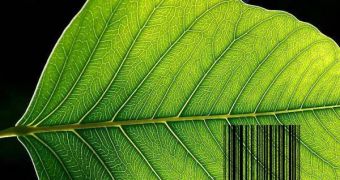Biologists have been attempting to create a catalog containing the most relevant genetic traits of all plant species for quite some time now, but the effort, which proved to be relatively simple in the case of animals, turns out to be rather complicated. Identifying the most unique traits in similar plant species is a very delicate matter, and that's why the recent “broad community agreement,” which identified two genes that would be used as markers, is so important. This general agreement could bring forth a new wave of barcode studies, experts believe.
In a study published in the latest issue of the journal Proceedings of the National Academy of Sciences (PNAS), scientists also argue that establishing the two new genes as the basis for a future classification may finally convince fund sources to invest in this research. Until now, the money has been scarce because no one was willing to invest in a line of research that might have been rendered obsolete if no international consensus existed on the matter.
“There is very clear desire in the community to reach some kind of agreement,” the lead author of the PNAS paper, Biologist Peter Hollingsworth, explains. He is also a scientist at the Royal Botanic Garden, in Edinburgh, the United Kingdom. The 52 authors involved in the new study eventually decided to use the two DNA regions known as rbcL and matK as the identifiers, after shifting through the impressive volumes of genetic materials inscribed in all seven DNA regions that plants had.
“This [work] captures the range of groups that have been comparing the different barcode regions. It represents an agreement to sequence the two loci that form the core barcode,” Hollingsworth says. He adds that the new markers are proficient in identifying 72 percent of all plant species, and that they can accurately point at least to the species group for the remaining 28 percent. The PNAS study was compiled by experts from the Smithsonian National Museum of Natural History-based International Consortium for the Barcode of Life (CBOL).
“I am confident that this paper will seriously energize the assembly of a barcode reference library for plants. I believe that this paper will settle arguments in relation to the 'core' barcode loci for plants,” University of Guelph Scientist Paul Hebert, from Ontario, Canada, concludes, quoted by Nature News.

 14 DAY TRIAL //
14 DAY TRIAL //